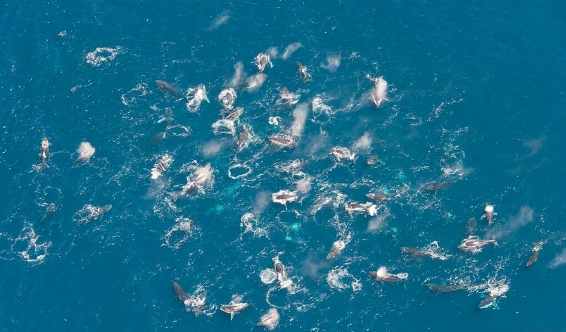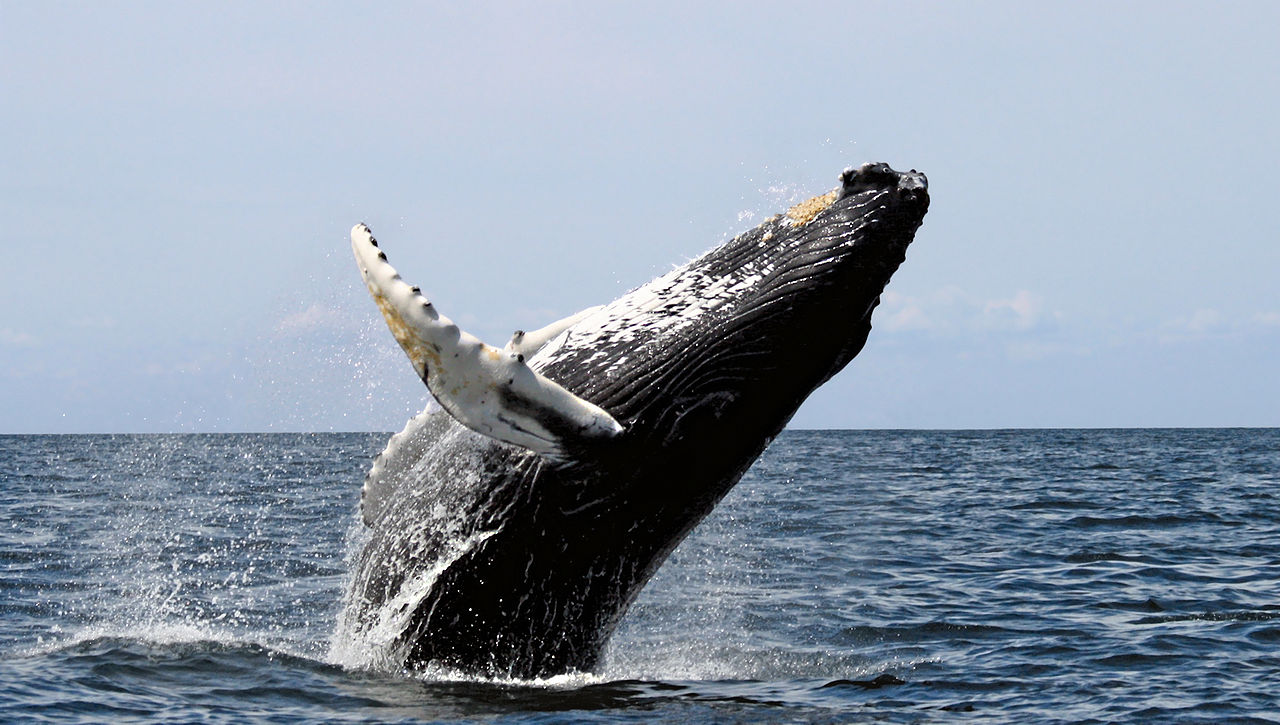
Like the rest of their species, the Southern Hemisphere humpbacks, or Megaptera novaeangliae, are not social animals. The baleen whales typically prefer to remain solo or amalgamate in small groups which disperse quickly. However, since 2011, researchers from the Cape Peninsula University of Technology in Cape Town have been observing a new phenomenon off the coast of South Africa — large swarms of whales, comprising anywhere from 20 to 200 individuals. Professor Ken Findlay and his team reported seeing 22 instances of the large groups on three different occasions in 2011, 2014, and 2015.
The researchers are not just mystified by the unusual social behavior but also that the “super-groups” were seen in October and November. That’s because the mammals typically spend these late summer months (in the Southern Hemisphere), feeding in the Antarctic waters before heading back to the warmer subtropical South African waters during winter, to breed and give birth. In a study published in the journal PLOS One on March 1, Findlay and his team outline some of the plausible reasons behind the drastic change in the mammals’ behavior.

The researchers say that the cause of the recent sightings could be because the baleen whales may have finally discovered the abundant food available in the Benguela Upwelling System. Located near the southwestern tip of South Africa between St. Helena Bay and Cape Point, the system of cold, nutrient-rich ocean currents is rich in phytoplanktons and species of small fish, such as the mantis shrimp, that the humpbacks feed on.
Another probable reason is the dramatic increase in humpback whale population. According to a recent scientific report, the mammals’ population, off the coast of Australia, has reached nearly 90 percent of pre-whaling numbers, while on the US East Coast, the number of whales is up 60 percent from its lows. All in all, experts estimate there are currently 150,000 humpback whales swimming in our oceans, a number that is large enough to remove them from the endangered species list that they have been a part of, since the 1970’s. Given that the massive creatures need between 4400 to 5500 pounds of food daily, the scientists speculate they have been forced to seek alternate feeding grounds.

However, while the theories may explain the decision to skip migrating to Antarctic waters, the reason for the social super-groups remains a mystery. According to Findley, “It's possible that the behavior was occurring but just not where it was visible. Because there were so few of them, we may not have seen it." With the increased numbers, it is easier to observe the whales feeding and frolicking together. The researchers are hopeful of seeing more of such long-lost behaviors as the whale population continues to grow. Meanwhile, the mammal swarms have made the South African coast a very popular location for humpback fans worldwide!
Resources: smithsonianmag.com, newscientist.com, journal.plos.org